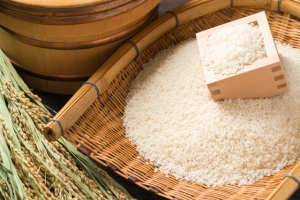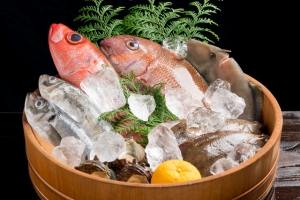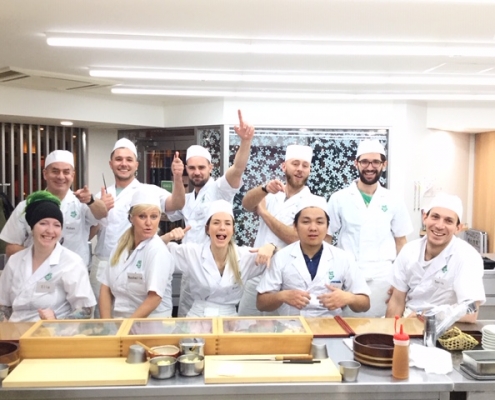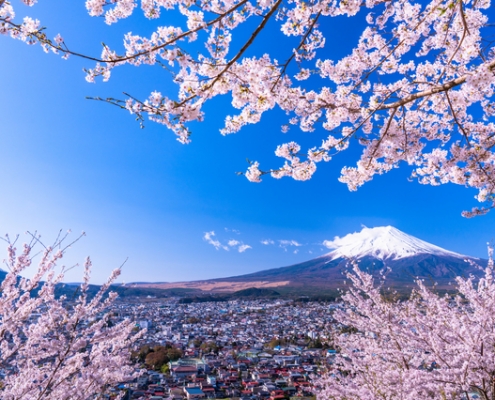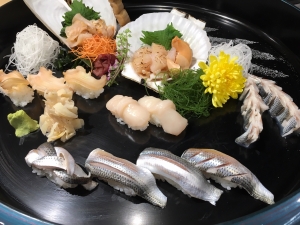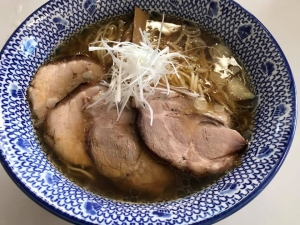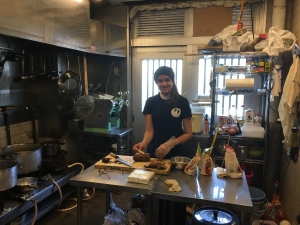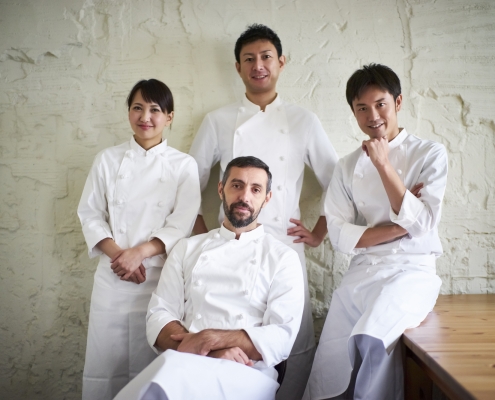Japanese grocery stores and ingredient suppliers in France
January 29th 2021 Updated
This page is for food lovers and professional chefs in France that are looking for Japanese cooking supplies.
Rice
In France, Japanese rice grown in the EU, the US and Japan is available, however, the rice produced in the EU (especially Italy and Spain) is cheaper and often used in Japanese restaurants.
Soy sauce
Various kinds of soy sauce, such as Kikkoman, Shoda, Higashimaru and Yamasa are readily found in France.
You can also find organic, gluten-free and low-sodium soy sauces, which are a bit pricier.
Miso
A wide variety of miso is available, but at high-end supermarkets, miso brands like Ariaké and Hikari are top sellers.
Seafood
In France, there is a trend toward having an open explanation of the source of the seafood with emphasis on sustainability and ethical fishing methods. In addition to that, with lower costs and a stable supply in mind, most Japanese restaurants use EU seafood products.
Many Japanese restaurants order seafood and have it delivered from wholesalers based in the Rungis market. In order to differentiate themselves from other restaurants in terms of type and quality of seafood, high-end restaurants purchase their own fish through contracts with fishermen, or they purchase Ikejime fish through Japanese fishmongers. The Ikejime technique of humanely processing fish has become popular in the French food and drink industry.
In most Japanese restaurants, the main types of seafood used are salmon and tuna, however, sea bass (French: Bar or Poisson noble for higher grades), flounder (French: Turbo / Barbue), and white fish such as sea bream (Japanese: Tai / French: Dorade royal) are often served in high class French restaurants as a main dish. Japanese restaurants often serve this kind of fish as well.
Alcohol
Most types of sake available in France are the ordinary brands coming from Japan and the US. But in recent years, high-end restaurants have seen an increasing demand for good quality sake, allowing more brands to become available, either through European vendors or connections established by the individual restaurant.
In addition, French made sake such as WAKAZE and “Les Larmes du Levant” are also gaining popularity.
List of Japanese grocery stores and ingredient suppliers
Below is a list of Japanese food importers who wholesale to supermarkets and restaurants, as well as supermarkets that sell Japanese food to the general public.
This list consists of vendors frequently used by Japanese in your country. (Some shops carry not only Japanese cooking supplies but also kitchen ware)
PERIPARK Gennevilliers Bâtiment C
101 Avenue Louis Roche 92230 Gennevilliers France
https://www.jfc.eu/fr/
https://www.wismettac.com/en/index.html
46 rue des Petits Champs 75002 Paris
www.kioko.fr
11 rue Saint Augustin 75002 Paris
http://www.workshop-isse.fr
37, Avenue Lacassagne 69003 Lyon
https://www.satsuki.fr/
30 Rue du Chemin Vert Paris, France 75011
https://www.facebook.com/pg/ebisuParis11
31 rue de la colombette 31000 Toulouse
http://www.tokaido-ya.fr/
https://www.umamiparis.com/fr/
Saint-Germain-des-Prés 95, rue de Seine, Paris 6e
http://www.jugetsudo.fr/
12 Rue Jacob, 75006 Paris, France
http://www.kama-asa.co.jp/fr/
Japanese Community Website
You can find the latest information on Japanese food suppliers on the following website.
Number of Local Japanese People
42,712 Japanese people live in France, as of 2017.
Number of Local Japanese Restaurants
According to a 2017 report by the Japanese government, there are about 2,900 restaurants called “Japanese restaurants” throughout France.
However, only about 10% of these are traditional style restaurants serving food that Japanese people consider Japanese food.
For French People Wanting to Study Japanese Cuisine in Japan
Do you want to study Japanese cuisine in Japan one day? Chefs Wonderland, an agency for helping foreign visitors study cooking in Japan, can make all your cooking school dreams come true.
There are two main ways to study Japanese cuisine in Japan.
One way is to enroll in a culinary school.
The other is to find work at a Japanese restaurant in Japan, although this is not very easy to do.
How Many French People are Living in Japan?
As of 2018, there are 13,950 French people living in Japan.
In addition, 304,896 French people visited to Japan in 2018.
Study Japanese Cuisine at a Culinary School
If you want to attend a Culinary Technical College for Japanese people, you need to be able to speak fluent Japanese, but even if you can’t speak Japanese, you can study Japanese cuisine at one of the following schools that offer English courses lasting anywhere from one day to three months.
There are classes for beginners, short-term intensive courses to get a certificate, and private classes for professional chefs.
Culinary Schools in Japan
Tokyo Sushi Academy
The first and the most popular sushi school in the world.
Japan Culinary Institute
Japanese culinary training including sushi, kaiseki, yakitori, wagashi and more.
Miyajima Ramen School
More than 1,000 graduates from over 50 countries.
International Ramen School
Ramen study program combined with OJT
Study Japanese Cuisine While Working
Under the current immigration laws, foreigners have very limited opportunities to work in restaurants in Japan, you would need a working holiday visa, a spouse visas, or a type of special activity visa issued only to a few people. If you want more information on studying Japanese cuisine while working in Japan,
please see the following article.
Working Holiday in Japan
Working holiday visas are issued to French nationals between the ages of 18 and 30 with a maximum of 1,500 people per year. If you can get a Working Holiday Visa, you can enjoy vacationing and working in Japan for up to one year.
If you are thinking about going on a Working Holiday to Japan, please see the following article.
Japan Working Holiday Guide – 15,000 youth get working holiday visa every year



